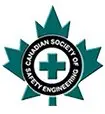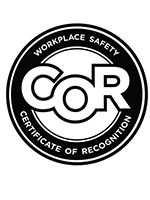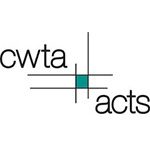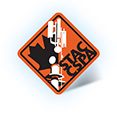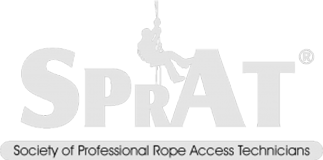Posted: Aug 1
-Fires-1.jpg)
Alberta's changing landscape presents unique challenges that are transforming how onsite fire and rescue teams approach emergency response.
As communities expand into previously undeveloped areas, the intersection between wildland and urban environments creates complex fire
scenarios that demand specialized strategies and enhanced coordination. If your organization needs expert guidance on adapting your
emergency response capabilities for WUI environments, contact MI Safety today to discuss tailored training solutions.
Defining WUI Fire Characteristics and Risks
Wildland-Urban Interface fires occur where residential and commercial development meets undeveloped wildland areas. These fires can rapidly transition between fuel types, spreading through natural vegetation before jumping to structures. In Alberta, WUI areas are particularly vulnerable due to extensive forested regions and expanding suburban development, creating scenarios where onsite fire and rescue teams must simultaneously protect structures while managing wildland fire behaviour.
How WUI Events Reshape Onsite Fire and Rescue Teams' Traditional Roles
Traditional firefighting approaches focus on either structural fire suppression or wildland fire management as separate disciplines.
However, WUI fires force onsite fire and rescue teams to blend these specialties, requiring crews to think tactically about both structural
protection and wildland fire suppression simultaneously. This evolution demands that onsite fire and rescue teams develop hybrid skill sets
and maintain equipment suitable for both environments.
-Fires-2.jpg)
Implementing Ember Mapping Strategies for WUI Response
Ember mapping has become a critical tool for onsite fire and rescue teams operating in WUI environments. This strategy involves identifying and tracking ember transport patterns to predict where spot fires might occur ahead of the main fire front. Teams use weather data, topographical information, and real-time observations to create ember exposure maps that guide resource deployment and evacuation decisions.
Managing Dual Threats: Structural and Wildland Fire Suppression
WUI fires present onsite fire and rescue teams with the challenge of managing two distinct but interconnected threats. Effective dual-threat management involves establishing clear priorities based on life safety, property protection potential, and resource availability. Onsite fire and rescue teams must make rapid decisions about when to transition from offensive structural protection to defensive wildland suppression.
Coordinating Evacuations with Public Safety Partners
WUI fire evacuations require unprecedented coordination between onsite fire and rescue teams and public safety partners. Unlike urban fires that typically affect individual structures, WUI fires can threaten entire communities with limited egress routes. Effective evacuation coordination involves pre-established communication protocols and regular training exercises that simulate WUI fire scenarios.
-Fires-3.jpg)
PPE Requirements: Structural vs. Wildland Firefighting Gear
Personal protective equipment for WUI firefighting represents a compromise between the heavy protection required for structural firefighting and the mobility needs of wildland operations. Onsite fire and rescue teams operating in WUI environments typically require lighter-weight protective clothing that still meets structural firefighting standards while allowing for greater mobility and heat dissipation.
Specialized Training Protocols for Onsite Fire and Rescue Teams
Training protocols for WUI firefighting must address the unique challenges that onsite fire and rescue teams face when operating in these hybrid environments. This training goes beyond traditional structural firefighting education to include wildland fire behaviour, weather interpretation, and tactical decision-making in rapidly changing conditions.
Fast-Moving Fire Adaptation Techniques
WUI fires often move faster than traditional structural fires, requiring onsite fire and rescue teams to adapt their tactical approaches for rapid fire spread scenarios. This includes developing techniques for quickly assessing structure defensibility and maintaining situational awareness in dynamic environments.
-Fires-4.jpg)
Optimizing Team Structure for WUI Environments
Modern onsite fire and rescue teams require diverse skill sets to operate effectively in WUI environments. Optimal crew composition includes
personnel with both structural and wildland firefighting experience, individuals skilled in risk assessment and tactical decision-making,
and team members capable of operating specialized equipment for both structural and wildland applications.
Critical Interagency Drills for Response Effectiveness
Regular interagency training exercises are essential for ensuring that onsite fire and rescue teams can work effectively with other
responding agencies during WUI incidents. These drills should simulate realistic WUI scenarios, including evacuation coordination, resource
sharing, and communication protocols.
-Fires-5.jpg)
The evolving nature of WUI fires in Alberta requires onsite fire and rescue teams to continuously adapt their training, equipment, and tactical approaches. Success in these challenging environments depends on understanding the unique characteristics of WUI fires, developing hybrid skill sets that combine structural and wildland firefighting capabilities, and maintaining strong interagency coordination.
Ready to enhance your team's WUI firefighting capabilities? Contact MI Safety to discuss specialized training programs designed specifically for Alberta's onsite fire and rescue teams. Our expert instructors can help your organization develop the skills and strategies needed to effectively respond to Wildland-Urban Interface fires while maintaining the highest safety standards.
